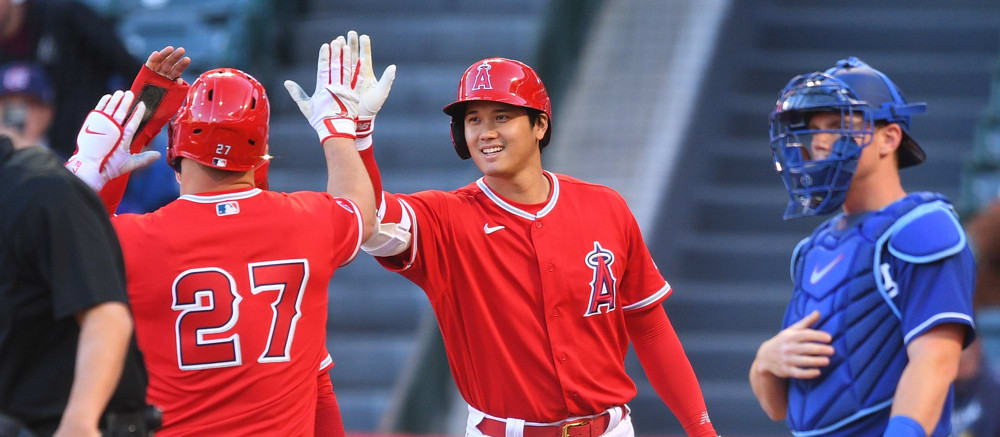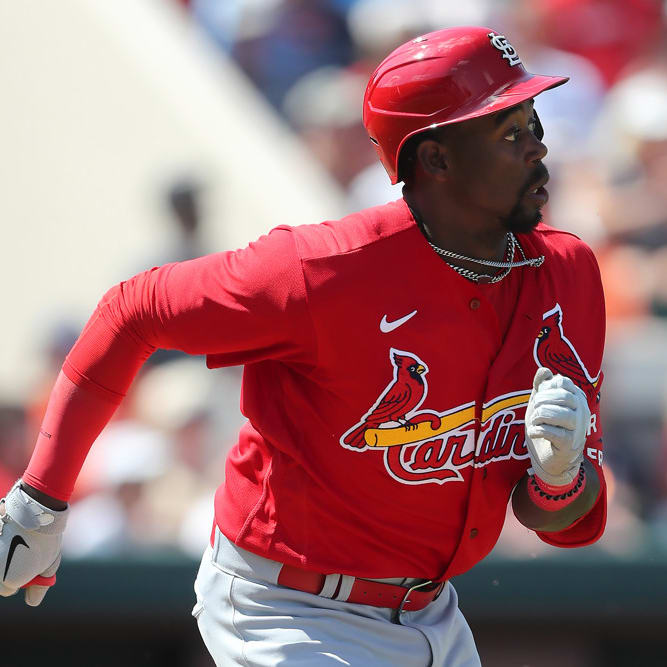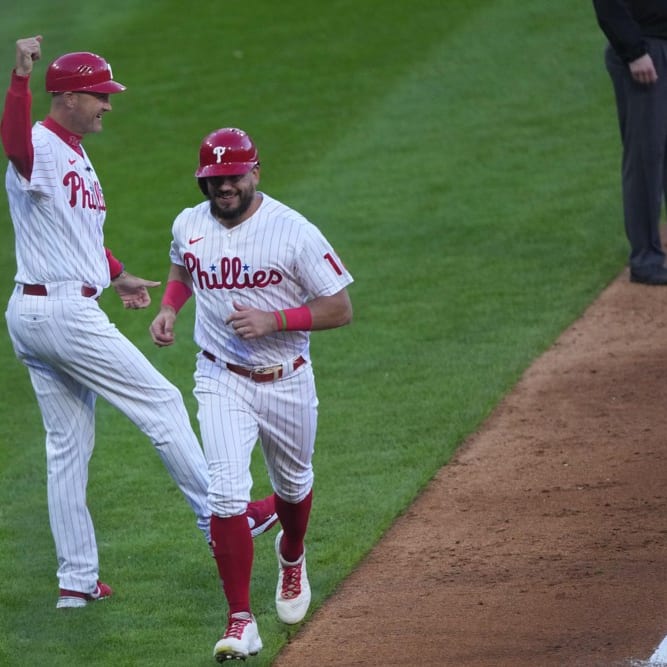This article is part of our MLB Barometer series.
A couple times a year, I like to use this space for a bit of self-assessment, either out of vanity or because I think such self-assessment might help readers think about their own approach to the game. This week, I want to take a look at my strategy for drafting steals this past winter in hopes of bringing forth such insights.
The anticipated increase in stolen bases was one of the biggest topics of conversation in the fantasy baseball world over the winter, with drafters largely falling into two camps:
- Steals will be up this year, so I need to identity where the additional steals will come from and move those players up my draft board.
- Steals will be up this year, but those additional steals will be spread proportionally among all players according to how many bases they stole previously, so I don't need to adjust my gameplan.
I was very much in the second camp. While I figured you might need 150 steals to accomplish what 100 steals got you last season, my assumption was that if you drafted the same sort of players whose steals added up to 100 last year, you'd likely get 150 steals this year.
Did the approach work? Well, that depends on what you mean. In terms of leading to good results in the steals category, the answer is a pretty firm "no." Here's how I currently rank in the offensive stats across my various categories leagues:
| Category | R | HR | RBI | SB | AVG/OBP |
|---|
A couple times a year, I like to use this space for a bit of self-assessment, either out of vanity or because I think such self-assessment might help readers think about their own approach to the game. This week, I want to take a look at my strategy for drafting steals this past winter in hopes of bringing forth such insights.
The anticipated increase in stolen bases was one of the biggest topics of conversation in the fantasy baseball world over the winter, with drafters largely falling into two camps:
- Steals will be up this year, so I need to identity where the additional steals will come from and move those players up my draft board.
- Steals will be up this year, but those additional steals will be spread proportionally among all players according to how many bases they stole previously, so I don't need to adjust my gameplan.
I was very much in the second camp. While I figured you might need 150 steals to accomplish what 100 steals got you last season, my assumption was that if you drafted the same sort of players whose steals added up to 100 last year, you'd likely get 150 steals this year.
Did the approach work? Well, that depends on what you mean. In terms of leading to good results in the steals category, the answer is a pretty firm "no." Here's how I currently rank in the offensive stats across my various categories leagues:
| Category | R | HR | RBI | SB | AVG/OBP |
|---|---|---|---|---|---|
| Avg Rank | 7.1 | 5.2 | 4.5 | 9.3 | 4.9 |
| Med Rank | 5.0 | 3.2 | 3.0 | 12.0 | 4.0 |
Note: I prorated all my league sizes to 15 for the sake of uniformity, so a fifth-place ranking in a 10-team league would count as 7.5 for the purposes of these tables.
Whether the theory was wrong or whether I went too far in applying it is unclear to me at this point, but it's safe to say that my approach generally led me to offenses which have produced in the other four categories while struggling in steals. The issue likely stems from winding up with a few too many players who are true zeroes on the basepaths. Steals per game may be collectively up 40 percent on the season, but if you take Yordan Alvarez's total of one steal from last year and add 40 percent to it, you still get just one steal (at least until baseball starts awarding fractional stolen bases).
On the other hand, the goal of fantasy baseball is to win your league, not to win the steals category. From that perspective, I'd say my approach has paid off. I'm currently sitting in a top-two spot in eight of 15 categories leagues and am in the top third in four more. The difference in my success between leagues doesn't appear to have much to do with the stolen base category:
| League Rank | SB (avg rank) | R/HR/RBI/AVG (avg rank) |
| 1-5 | 9.4 | 4.0 |
| 6-15 | 11.8 | 10.0 |
While it's true that my worst teams are doing even worse in steals, it's clear that the biggest difference has come from the rest of the offensive categories. This makes intuitive sense to me and was part of my logic for not going all-in on steals this winter. If you expect 30 steals from a player and he gives you just 15, all you're out is 15 steals and maybe a couple runs. If you expect 30 homers from a player and he gives you 15, you're out 15 homers, 15 runs, around 25-30 points of batting average and at least 15 RBI.
So what's the generalizable lesson from all this navel-gazing? I can think of two. The first is to play to your strengths. There may in fact be one approach that's the best path to take heading into a given season, but a poorly-executed version of the ideal plan is likely to get beaten out by a suboptimal plan that's executed well, and you're much more likely to pull off a plan that you're comfortable with. In my case, as someone who already emphasized steals a bit less than most drafters, I was probably always more likely to do better with the approach I took than I would have if I suddenly started targeting steals more heavily. The other lesson is that it's often best to zig while others are zagging. The whole picture won't become clear until the end of the year, but my anecdotal evidence suggests that all the discussion on what to do about speed this winter may have created some good values on players whose strengths lie elsewhere.
I'd be curious to hear which approach you took towards steals this season and whether it seems to be working thus far. For now, we'll move past that big-picture strategy talk and onto a handful of players who have been making noise (for better or worse) in recent weeks.
RISERS
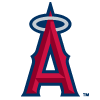 Shohei Ohtani, DH/SP, Angels: Ohtani does so many things so ridiculously well that it can sometimes be hard to notice when he's getting even better. While Ohtani the pitcher is perhaps a slight step behind last year's version (albeit still very good), Ohtani the hitter is reaching levels we've never seen. In his last 20 games, he's hit .382/.478/.961 with three steals and an incredible 12 homers. His 24 homers on the season lead the league, and while the rest of the top 10 in that category has averaged 1.7 steals, Ohtani has 10. His .295 batting average would represent a career high, and his .288 xBA suggests it's right in line with what he deserves. The two-way star struck out 28.1 percent of the time in his first four MLB seasons but cut that mark down to 24.2 percent last year, only to cut it again to 21.7 percent this season. Slight contact concerns were perhaps the only flaw in Ohtani's game prior to this year, so if he's solved that problem as well, he may have added another $100 million to his contract next winter.
Shohei Ohtani, DH/SP, Angels: Ohtani does so many things so ridiculously well that it can sometimes be hard to notice when he's getting even better. While Ohtani the pitcher is perhaps a slight step behind last year's version (albeit still very good), Ohtani the hitter is reaching levels we've never seen. In his last 20 games, he's hit .382/.478/.961 with three steals and an incredible 12 homers. His 24 homers on the season lead the league, and while the rest of the top 10 in that category has averaged 1.7 steals, Ohtani has 10. His .295 batting average would represent a career high, and his .288 xBA suggests it's right in line with what he deserves. The two-way star struck out 28.1 percent of the time in his first four MLB seasons but cut that mark down to 24.2 percent last year, only to cut it again to 21.7 percent this season. Slight contact concerns were perhaps the only flaw in Ohtani's game prior to this year, so if he's solved that problem as well, he may have added another $100 million to his contract next winter.
 Blake Snell, SP, Padres: Snell has a well-earned reputation for streakiness, so we'll begin this section with a caveat that his current run is by no means guaranteed to continue. That said, his performances of late can't be ignored. In his last five outings, he owns a 0.60 ERA and 0.90 WHIP, striking out 38.8 percent of opposing batters. Those numbers represent a massive improvement on his 5.40 ERA, 1.56 WHIP and 23.8 percent strikeout rate from his first nine starts. The one caveat here is that Snell's walk rate during his hot streak remains elevated at 11.2 percent, but even that represents an improvement on his 13.5 percent mark up to that point. Despite Snell's aforementioned volatility, what makes this run easier to buy into is the fact that it's been paired with an increase in velocity, as his fastball has averaged 95.8 mph over his last five outings after sitting at 94.7 mph in his first nine. Snell's fastball averaged between 95.2 and 96.0 mph in each of the previous five seasons, so there's no reason to doubt that his recent uptick will stick.
Blake Snell, SP, Padres: Snell has a well-earned reputation for streakiness, so we'll begin this section with a caveat that his current run is by no means guaranteed to continue. That said, his performances of late can't be ignored. In his last five outings, he owns a 0.60 ERA and 0.90 WHIP, striking out 38.8 percent of opposing batters. Those numbers represent a massive improvement on his 5.40 ERA, 1.56 WHIP and 23.8 percent strikeout rate from his first nine starts. The one caveat here is that Snell's walk rate during his hot streak remains elevated at 11.2 percent, but even that represents an improvement on his 13.5 percent mark up to that point. Despite Snell's aforementioned volatility, what makes this run easier to buy into is the fact that it's been paired with an increase in velocity, as his fastball has averaged 95.8 mph over his last five outings after sitting at 94.7 mph in his first nine. Snell's fastball averaged between 95.2 and 96.0 mph in each of the previous five seasons, so there's no reason to doubt that his recent uptick will stick.
 Corey Seager, SS, Rangers: While surprise breakouts are a large part of the fun of fantasy baseball, it can also be fun to watch a player live up to lofty expectations. If you polled 10 fantasy analysts prior to the season and asked for a handful of players who looked set to benefit from the shift ban, Seager would have been mentioned by at least eight or nine of them. A trip to the injured list early in the season cost him over a month, but he's nonetheless already climbed to seventh in earned auction value at shortstop despite playing 19 fewer games than anyone ahead of him. He's stolen just a single base, so all his value has come from exactly the place it looked like it would, as his strong performance at the plate has reached another level. In 42 games, he's homered 10 times while slashing .367/.424/.657, good for a 195 wRC+, the best mark in the league among players with more than 25 plate appearances. It's not entirely clear that the lack of the shift is the reason for Seager's success, however, as he's also simply making better contact than ever. For his career, he owns a 9.9 percent barrel rate, but he's up to 20.1 percent this season, good for third behind Aaron Judge and Jake Burger (min. 100 plate appearances).
Corey Seager, SS, Rangers: While surprise breakouts are a large part of the fun of fantasy baseball, it can also be fun to watch a player live up to lofty expectations. If you polled 10 fantasy analysts prior to the season and asked for a handful of players who looked set to benefit from the shift ban, Seager would have been mentioned by at least eight or nine of them. A trip to the injured list early in the season cost him over a month, but he's nonetheless already climbed to seventh in earned auction value at shortstop despite playing 19 fewer games than anyone ahead of him. He's stolen just a single base, so all his value has come from exactly the place it looked like it would, as his strong performance at the plate has reached another level. In 42 games, he's homered 10 times while slashing .367/.424/.657, good for a 195 wRC+, the best mark in the league among players with more than 25 plate appearances. It's not entirely clear that the lack of the shift is the reason for Seager's success, however, as he's also simply making better contact than ever. For his career, he owns a 9.9 percent barrel rate, but he's up to 20.1 percent this season, good for third behind Aaron Judge and Jake Burger (min. 100 plate appearances).
 Jorge Soler, OF, Marlins: You never really know what you're going to get with Soler, who's shown plenty of flashes throughout his decade-long career in the majors but who's never strung together back-to-back successful seasons. He wasn't particularly good in his first year in Miami, hitting a modest .207/.295/.400 with 13 homers in 72 games, with back and hip injuries costing him extensive time. He's avoided the injured list so far this season and has started nearly every game, missing just three while dealing with a sore thumb in early June. A run of health has brought with it the best version of Soler we've seen yet, at least according to his career-high 145 wRC+, the product of a .256/.358/.551 slash line. He's been even better if you zoom in on just May and June, as he owns a .277/.386/.604 line over that stretch. Soler has reached his new level of success by combining power and contact in a way he never has before. His excellent 17.8 percent barrel rate is merely the second-highest mark of his career, but it's been paired with a 23.6 percent strikeout rate; when he posted his career-best 18.5 percent barrel rate back in 2020, it came with a much worse 34.5 percent strikeout rate.
Jorge Soler, OF, Marlins: You never really know what you're going to get with Soler, who's shown plenty of flashes throughout his decade-long career in the majors but who's never strung together back-to-back successful seasons. He wasn't particularly good in his first year in Miami, hitting a modest .207/.295/.400 with 13 homers in 72 games, with back and hip injuries costing him extensive time. He's avoided the injured list so far this season and has started nearly every game, missing just three while dealing with a sore thumb in early June. A run of health has brought with it the best version of Soler we've seen yet, at least according to his career-high 145 wRC+, the product of a .256/.358/.551 slash line. He's been even better if you zoom in on just May and June, as he owns a .277/.386/.604 line over that stretch. Soler has reached his new level of success by combining power and contact in a way he never has before. His excellent 17.8 percent barrel rate is merely the second-highest mark of his career, but it's been paired with a 23.6 percent strikeout rate; when he posted his career-best 18.5 percent barrel rate back in 2020, it came with a much worse 34.5 percent strikeout rate.
 Leody Taveras, OF, Rangers: Taveras opened the season on the injured list due to an oblique strain, something which combined with his career .226/.280/.344 slash line to make him an afterthought during draft season. He didn't do much through the end of April, posting a .586 OPS in 16 games, but the 24-year-old has looked like a different player since then. In 44 games since the start of May, he's hit .340/.388/.551 with eight homers and six steals, putting him on place for 28 and 21, respectively, per 600 plate appearances. One key to his recent run is that he suddenly started making more contact. He struck out 28.9 percent of the time through the end of last year and posted a similar 27.1 percent strikeout rate in April, but he's cut his strikeout rate to 16.4 percent since May 1. His 7.7 percent barrel rate over his hot streak remains slightly below league average, but that's probably all he needs to be a productive everyday outfielder when combined with his speed, defense and newfound contact ability.
Leody Taveras, OF, Rangers: Taveras opened the season on the injured list due to an oblique strain, something which combined with his career .226/.280/.344 slash line to make him an afterthought during draft season. He didn't do much through the end of April, posting a .586 OPS in 16 games, but the 24-year-old has looked like a different player since then. In 44 games since the start of May, he's hit .340/.388/.551 with eight homers and six steals, putting him on place for 28 and 21, respectively, per 600 plate appearances. One key to his recent run is that he suddenly started making more contact. He struck out 28.9 percent of the time through the end of last year and posted a similar 27.1 percent strikeout rate in April, but he's cut his strikeout rate to 16.4 percent since May 1. His 7.7 percent barrel rate over his hot streak remains slightly below league average, but that's probably all he needs to be a productive everyday outfielder when combined with his speed, defense and newfound contact ability.
 Jordan Hicks, RP, Cardinals: When Ryan Helsley hit the injured list with a forearm strain at the start of last week, the natural assumption was that Giovanny Gallegos would pick up Helsley's share of save chances, as Gallegos already held an unexpected 8-to-7 edge in saves over Helsley at that point. Instead, the Cardinals generated three straight save chances from Saturday through Monday, with Hicks earning all three of them. He got the job done each time, striking out four and walking none while scattering a pair of hits. Hicks' usage alone makes him a riser, and there's presumably a chance he continues earning saves even once Helsley returns, especially since St. Louis has turned to him in the past in the same role. Hicks' 4.02 ERA on the season certainly doesn't look closer-like, but that's held back by his 7.62 ERA in his first 14 appearances. In 16 outings since then, he owns a 1.47 ERA. Crucially, he's cut his walk rate to 9.7 percent over that latter stretch, down from an awful 19.7 percent in the former. He also owns a 34.3 percent strikeout rate on the year, well above his 23.0 percent career mark from prior to this season. He'll need to hold onto his control gains and remain healthy, but Hicks may finally be looking like a true closer.
Jordan Hicks, RP, Cardinals: When Ryan Helsley hit the injured list with a forearm strain at the start of last week, the natural assumption was that Giovanny Gallegos would pick up Helsley's share of save chances, as Gallegos already held an unexpected 8-to-7 edge in saves over Helsley at that point. Instead, the Cardinals generated three straight save chances from Saturday through Monday, with Hicks earning all three of them. He got the job done each time, striking out four and walking none while scattering a pair of hits. Hicks' usage alone makes him a riser, and there's presumably a chance he continues earning saves even once Helsley returns, especially since St. Louis has turned to him in the past in the same role. Hicks' 4.02 ERA on the season certainly doesn't look closer-like, but that's held back by his 7.62 ERA in his first 14 appearances. In 16 outings since then, he owns a 1.47 ERA. Crucially, he's cut his walk rate to 9.7 percent over that latter stretch, down from an awful 19.7 percent in the former. He also owns a 34.3 percent strikeout rate on the year, well above his 23.0 percent career mark from prior to this season. He'll need to hold onto his control gains and remain healthy, but Hicks may finally be looking like a true closer.
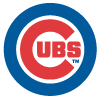 Adbert Alzolay, RP, Cubs: Alzolay didn't earn his first save of the year until May 6, by which point Michael Fulmer, Brad Boxberger and Mark Leiter had all recorded at least one. He's only recorded four saves since that date, but that represents two-thirds of the Cubs' total over that time period, with Leiter grabbing the other two. Whether Alzolay counts as a true closer or not at this point is hard to say, but he looks like the best reliever on the team and is seemingly the favorite to lead the team in saves the rest of the way. Veterans Fulmer and Boxberger both have ERAs north of 5.00 with similarly poor peripherals, so Alzolay's toughest competition may continue to come from Leiter. Leiter deserves credit for his 2.64 ERA and 37.7 percent strikeout rate, but he doesn't have much of a track record, carrying a 4.95 ERA and 22.4 percent strikeout rate into this season. Alzolay's overall track record might be mixed, as he's battled injuries and underperformance as a starter, but his performances as a reliever have been excellent throughout his career. In 75.2 lifetime innings in relief, the righty owns a 2.14 ERA backed by a 30.8 percent strikeout rate and 5.9 percent walk rate.
Adbert Alzolay, RP, Cubs: Alzolay didn't earn his first save of the year until May 6, by which point Michael Fulmer, Brad Boxberger and Mark Leiter had all recorded at least one. He's only recorded four saves since that date, but that represents two-thirds of the Cubs' total over that time period, with Leiter grabbing the other two. Whether Alzolay counts as a true closer or not at this point is hard to say, but he looks like the best reliever on the team and is seemingly the favorite to lead the team in saves the rest of the way. Veterans Fulmer and Boxberger both have ERAs north of 5.00 with similarly poor peripherals, so Alzolay's toughest competition may continue to come from Leiter. Leiter deserves credit for his 2.64 ERA and 37.7 percent strikeout rate, but he doesn't have much of a track record, carrying a 4.95 ERA and 22.4 percent strikeout rate into this season. Alzolay's overall track record might be mixed, as he's battled injuries and underperformance as a starter, but his performances as a reliever have been excellent throughout his career. In 75.2 lifetime innings in relief, the righty owns a 2.14 ERA backed by a 30.8 percent strikeout rate and 5.9 percent walk rate.
FALLERS
 Mitch Keller, SP, Pirates: By including Keller as a faller this week, I don't mean to imply that he's fallen all the way back to being the guy who struggled so significantly over the previous four seasons. However, it's probably time to pump the brakes a bit on the hype he was receiving throughout the first two months of the season. Check out how his numbers from his last five starts compare to those from his first nine outings this year as well as to his career numbers up to this point:
Mitch Keller, SP, Pirates: By including Keller as a faller this week, I don't mean to imply that he's fallen all the way back to being the guy who struggled so significantly over the previous four seasons. However, it's probably time to pump the brakes a bit on the hype he was receiving throughout the first two months of the season. Check out how his numbers from his last five starts compare to those from his first nine outings this year as well as to his career numbers up to this point:
| Sample | ERA | WHIP | K% | BB% | HR/9 |
|---|---|---|---|---|---|
| 2019-2022 | 5.00 | 1.57 | 21.1% | 9.7% | 0.93 |
| 2023, first nine starts | 2.38 | 0.97 | 30.7% | 5.6% | 0.72 |
| 2023, last five starts | 6.14 | 1.50 | 23.7% | 9.2% | 1.53 |
Over his last five outings, Keller has given back nearly all of his gains in strikeout and walk rate while suddenly developing a home run problem. The good news is that there hasn't been a notable change in Keller's velocity or complex pitch mix (four-seamer, cutter, sinker, sweeper, curveball and changeup) during this recent stretch, so there's reason to believe the good times will return. Given how much of an outlier his first nine starts were compared to the rest of Keller's career, however, it's probably best to expect at most a partial return to those numbers.
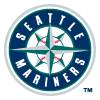 Eugenio Suarez, 3B, Mariners: Coming off the worst season of his career in 2021, Suarez looked to be headed towards fantasy irrelevance following his move from Cincinnati to Seattle last season, one of the most dramatic shifts in park factors in the league. Those predictions proved incorrect, as he rebounded to hit a respectable .236 with 31 homers, but they may have merely been a year too early. Suarez has only homered seven times this season (putting him on pace for 16) and has seen his slash line dip to .215 /.310/.331. His .448 xSLG suggests he's gotten unlucky in the power department, but his 11.2 percent barrel rate, while still strong, is his weakest mark since 2018. Given his age (31) and his difficult home park, it's hard to make a case that the power is about to come rushing back, and he doesn't hit for nearly a high enough average to prop up his fantasy value if his power remains merely decent. It's easier to envision things getting worse than getting better, and that's been the case in the month of June, when his wRC+ sits at 65 in 15 games.
Eugenio Suarez, 3B, Mariners: Coming off the worst season of his career in 2021, Suarez looked to be headed towards fantasy irrelevance following his move from Cincinnati to Seattle last season, one of the most dramatic shifts in park factors in the league. Those predictions proved incorrect, as he rebounded to hit a respectable .236 with 31 homers, but they may have merely been a year too early. Suarez has only homered seven times this season (putting him on pace for 16) and has seen his slash line dip to .215 /.310/.331. His .448 xSLG suggests he's gotten unlucky in the power department, but his 11.2 percent barrel rate, while still strong, is his weakest mark since 2018. Given his age (31) and his difficult home park, it's hard to make a case that the power is about to come rushing back, and he doesn't hit for nearly a high enough average to prop up his fantasy value if his power remains merely decent. It's easier to envision things getting worse than getting better, and that's been the case in the month of June, when his wRC+ sits at 65 in 15 games.
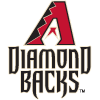 Josh Rojas, 2B/3B, Diamondbacks: Two years ago, Rojas started 116 games as the Diamondbacks went 52-110. This season, the Diamondbacks already have 44 wins on June 21, and Rojas is no longer a member of the active roster. Some of that is due to the fact that Arizona's offense improved around him, going from 26th in team wRC+ in 2021 to 11th this year, causing Rojas to go from one of the team's best nine hitters to no longer one of the team's best 13. A large part has to do with his own downturn in performance, however. Rojas has come to the plate 210 times this season and has yet to homer, with his .300 xSLG suggesting that his actual .306 slugging percentage was very much deserved. A utility player with speed and contact can get by without any power, but Rojas hasn't been that guy this season. His six steals aren't enough to make him an asset on their own, while his 23.3 percent strikeout rate is slightly worse than league average. He needs to make a lot more contact or a lot harder contact to be a real asset at the plate, and it would be a surprise if he takes a big step in either area in his age-29 season.
Josh Rojas, 2B/3B, Diamondbacks: Two years ago, Rojas started 116 games as the Diamondbacks went 52-110. This season, the Diamondbacks already have 44 wins on June 21, and Rojas is no longer a member of the active roster. Some of that is due to the fact that Arizona's offense improved around him, going from 26th in team wRC+ in 2021 to 11th this year, causing Rojas to go from one of the team's best nine hitters to no longer one of the team's best 13. A large part has to do with his own downturn in performance, however. Rojas has come to the plate 210 times this season and has yet to homer, with his .300 xSLG suggesting that his actual .306 slugging percentage was very much deserved. A utility player with speed and contact can get by without any power, but Rojas hasn't been that guy this season. His six steals aren't enough to make him an asset on their own, while his 23.3 percent strikeout rate is slightly worse than league average. He needs to make a lot more contact or a lot harder contact to be a real asset at the plate, and it would be a surprise if he takes a big step in either area in his age-29 season.

